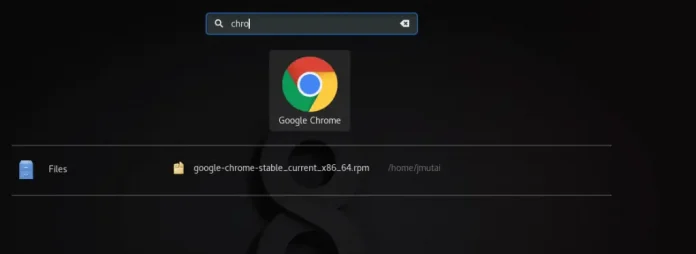Given two strings S and T, the task is to check if any anagram of string S is lexicographically smaller than any anagram of string T.
Example:
Input: S = “xy”, T = “axy”
Output: Yes
Explanation: Rearrange yx into xy and axy into yxa. Then, xy<yxa.Input: S = “cd”, T = “abc”
Output: No
Approach: The approach is to check if the lexicographically smallest anagram of the string S is smaller than the lexicographically largest anagram of string T. If it is, then the answer is Yes. Otherwise, No. Now, follow the below steps to solve this question:
- Sort string S to get its lexicographically smallest anagram.
- Reverse sort string T to get its lexicographically largest anagram.
- Check if the new string T is greater than the new string S or not. If it is, print Yes. Otherwise, print No.
Below is the implementation of the above approach.
C++
// C++ program for the above approach#include <bits/stdc++.h>using namespace std;// Function to check if any anagram// of string S is lexicographically// smaller than any anagram of string Tvoid CompareAnagrams(string S, string T){ // Sort string S sort(S.begin(), S.end()); // Reverse sort string T sort(T.begin(), T.end(), greater<char>()); // Comparing both the strings if (S.compare(T) < 0) { cout << "Yes" << endl; } else { cout << "No" << endl; }}// Driver codeint main(){ string S = "cd"; string T = "abc"; CompareAnagrams(S, T); return 0;} |
Java
// Java program for the above approachimport java.util.*;class GFG { // function to Reverse String static String ReverseString(String myStr) { String nstr = ""; char ch; for (int i = 0; i < myStr.length(); i++) { ch = myStr.charAt(i); // extracts each character nstr = ch + nstr; // adds each character in // front of the existing string } return nstr; } // function to print string in sorted order static String sortString(String str) { char[] arr = str.toCharArray(); Arrays.sort(arr); return new String(arr); } // Function to check if any anagram // of string S is lexicographically // smaller than any anagram of string T static void CompareAnagrams(String S, String T) { // Sort string S sortString(S); // Reverse sort string T T = sortString(T); T = ReverseString(T); // Comparing both the strings if (S.compareTo(T) < 0) { System.out.println("Yes"); } else { System.out.println("No"); } } // Driver Code public static void main(String[] args) { String S = "cd"; String T = "abc"; CompareAnagrams(S, T); }}// This code is contributed by Potta Lokesh |
Python3
# Python 3 program for the above approach# Function to check if any anagram# of string S is lexicographically# smaller than any anagram of string Tdef CompareAnagrams(S, T): # Sort string S S = list(S) S.sort() S = ''.join(S) # Reverse sort string T T = list(T) T.sort(reverse=True) T = ''.join(T) # Comparing both the strings if (S < T): print("Yes") else: print("No")# Driver codeif __name__ == "__main__": S = "cd" T = "abc" CompareAnagrams(S, T) # This code is contributed by ukasp. |
C#
// C# program for the above approachusing System;public class GFG{ // function to Reverse Stringstatic string ReverseString(string myStr) { char[] myArr = myStr.ToCharArray(); Array.Reverse(myArr); return new string(myArr); }// function to print string in sorted order static void sortString(String str) { char []arr = str.ToCharArray(); Array.Sort(arr); String.Join("",arr); }// Function to check if any anagram// of string S is lexicographically// smaller than any anagram of string Tstatic void CompareAnagrams(string S, string T){ // Sort string S sortString(S); // Reverse sort string T sortString(T); ReverseString(T); // Comparing both the strings if (string.Compare(S, T) < 0) { Console.WriteLine("Yes"); } else { Console.WriteLine("No"); }}// Driver Codepublic static void Main(String []args) { string S = "cd"; string T = "abc"; CompareAnagrams(S, T);}}// This code is contributed by target_2. |
Javascript
<script> // JavaScript Program to implement // the above approach // function to Reverse String function ReverseString(myStr) { let nstr = ""; let ch; for (let i = 0; i < myStr.length; i++) { ch = myStr[i]; // extracts each character nstr = ch + nstr; // adds each character in // front of the existing string } return nstr; } // function to print string in sorted order function sortString(str) { let arr = str.split(); arr.sort(); return arr.join(); } // Function to check if any anagram // of string S is lexicographically // smaller than any anagram of string T function CompareAnagrams(S, T) { // Sort string S sortString(S); // Reverse sort string T T = sortString(T); T = ReverseString(T); // Comparing both the strings if (S.localeCompare(T) < 0) { document.write("Yes"); } else { document.write("No"); } } // Driver code let S = "cd"; let T = "abc"; CompareAnagrams(S, T);// This code is contributed by sanjoy_62.</script> |
No
Time Complexity: O(N*logN)
Auxiliary Space: O(1)
Ready to dive in? Explore our Free Demo Content and join our DSA course, trusted by over 100,000 neveropen!




